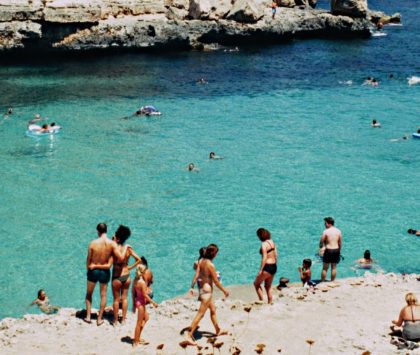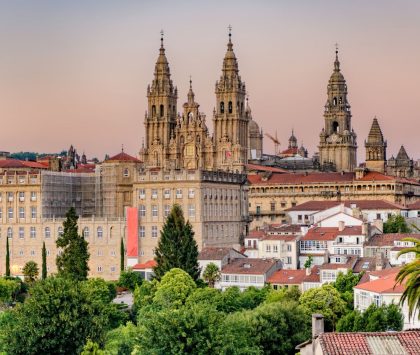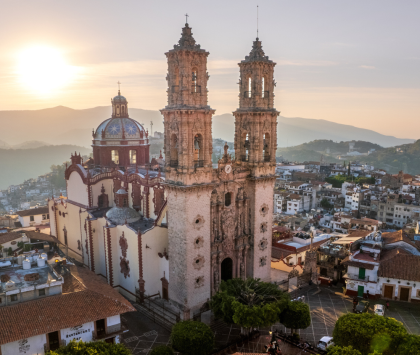
Évora, Portugal
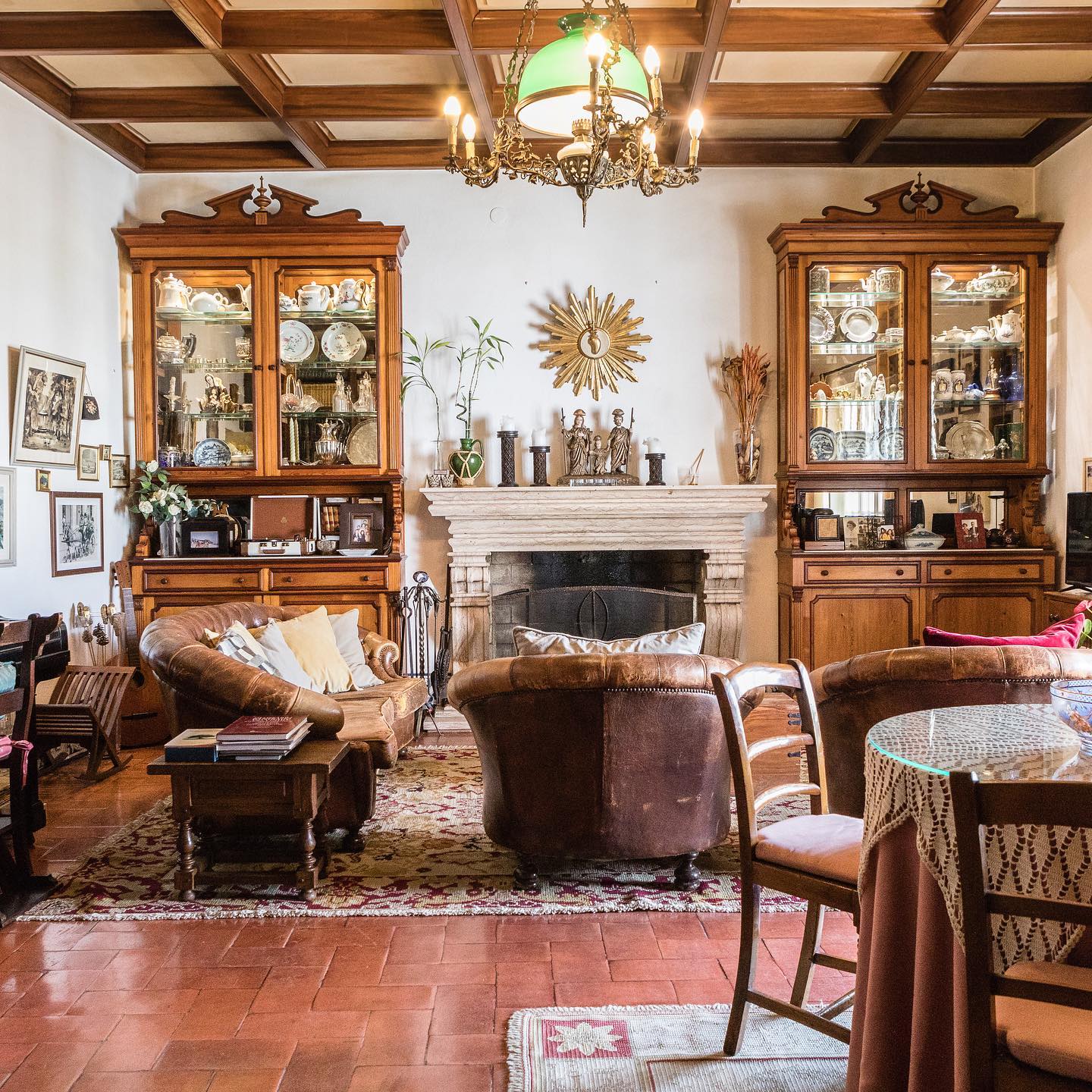
Casa do Escritor Bed and Breakfast’s living room. Photo by ? @miaocarmona
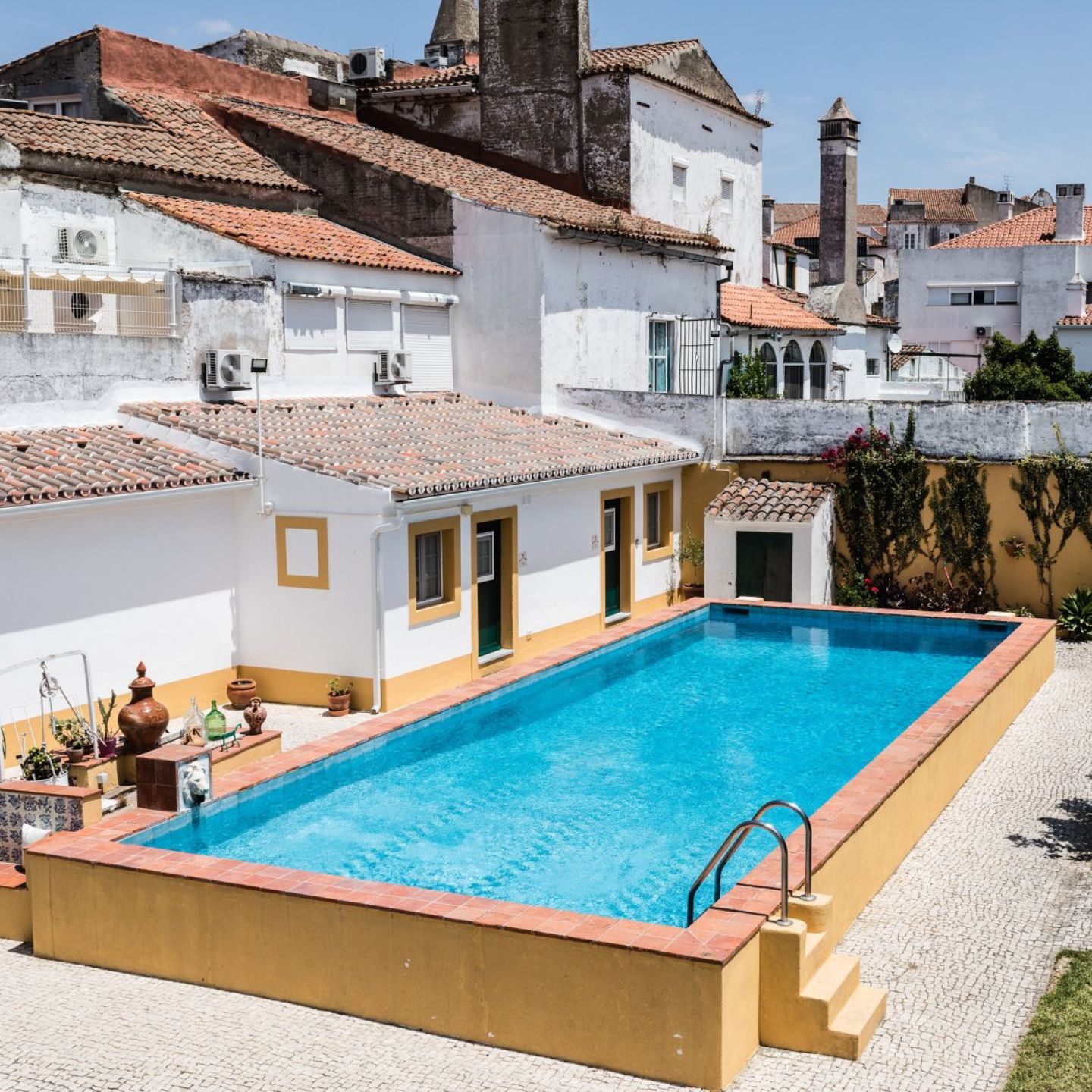
Casa do Escritor (Home of the Writer) guesthouse patio
Sipping a glass of local red wine, I look around the walled courtyard of my historic guesthouse and spot the tree just beyond the pool. When I checked in, the friendly, third generation owners of the 18th century Casa do Escritor (Home of the Writer) invited me to help myself to an orange from the tree. It’s a warm January day in the southern Portuguese town of Évora – temperatures are in the mid-teens this week – and the ripe fruit hangs heavy on the branches. I pick one, peel it and bite into the juicy flesh. It tastes of sunshine.
This is my favourite time of year to visit the southern regions of the Iberian Peninsula. Évora lies 140 kilometres south of Lisbon. Sevilla is 530 kilometres south of Madrid, Spain. The peninsula is known for having the warmest winters in all of Europe. Évora is more like a large town and Sevilla a small city, but they have a lot in common beyond the mild climate – each has a rich cultural heritage, beautiful architecture and unique culinary personalities.
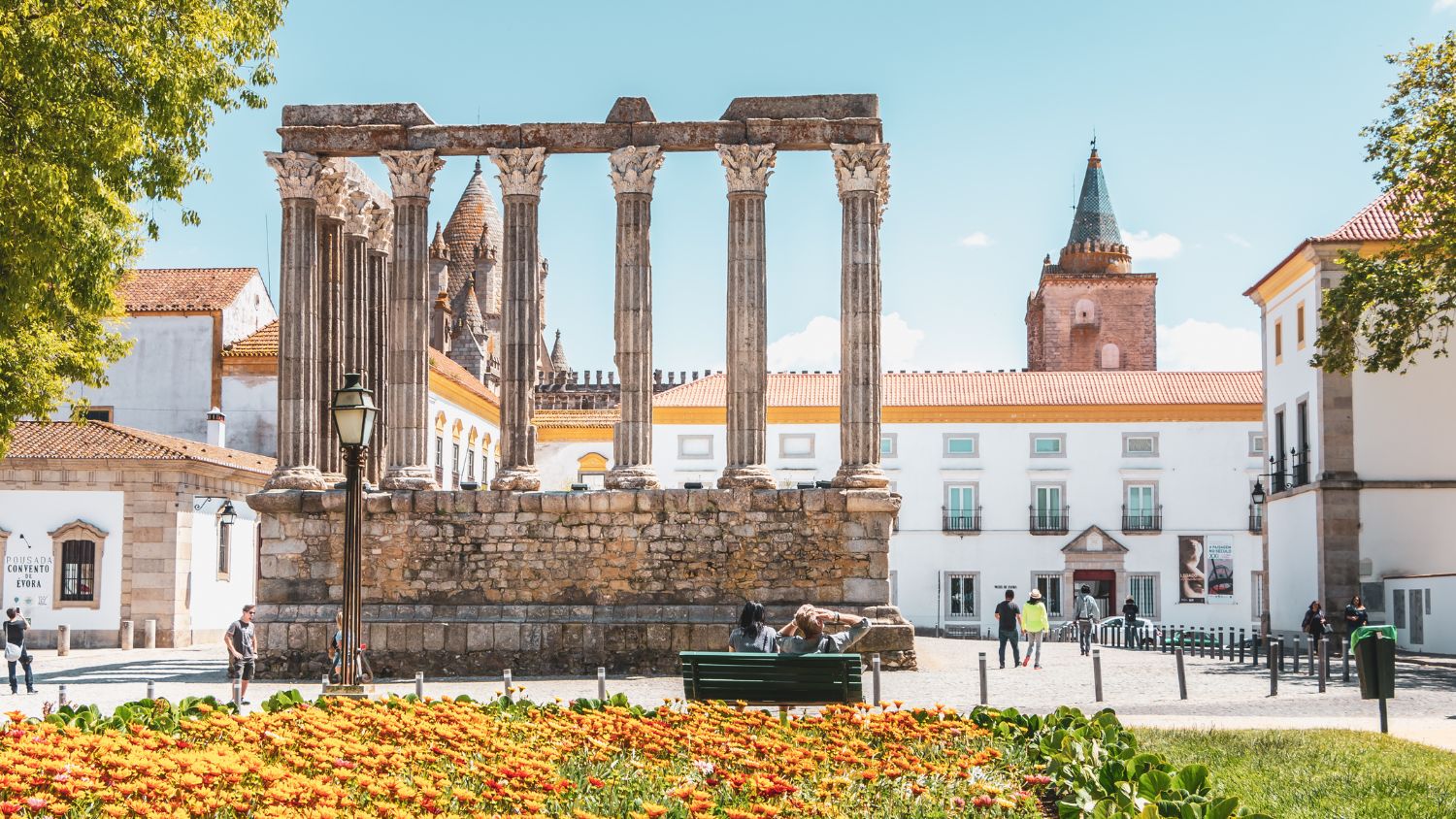
Architectural detail of the Roman temple of Evora in Portugal. Photo by Pierre-Olivier
I have a particular fondness for Évora. It’s a cultural gem. The European Union recently named it the European Capital of Culture for 2027. Leaving my sunny spot at the guesthouse, I set out to explore. The history of this partially walled, easily walkable capital of the Alentejo region and a UNESCO World Heritage Site runs millennia deep. Founded by Celts, then ruled by Romans starting in 57 BC, Évora reveals itself in layers. Near the centre of town, I linger in the Roman temple of Diana. In 715, the Moors conquered Évora and stayed until the Portuguese took over in 1165. I tour the cathedral built a century later, then follow the eight kilometre, 500-year-old Prata Aqueduct to the edge of town where houses and shops are built between some of the arches.
As evening falls, I duck into a typical Alentejo restaurant. No reservations are required. No menu is offered. Mom might be in the kitchen, preparing the evening feast. Dad might be the sommelier, pouring a red, blended at a local winery just for him. I’m served a hearty meal starring slow–cooked porco preto, a regional pork dish distinctively flavoured by the animal’s diet of acorns from the Alentejo’s famous cork tree forests.
The next morning, I spend my last hours in Évora at the Home of the Writer. In the courtyard, I peel another orange, close my eyes and turn my face to the warming winter sun, savouring the flavours of summer.
Sevilla, Spain
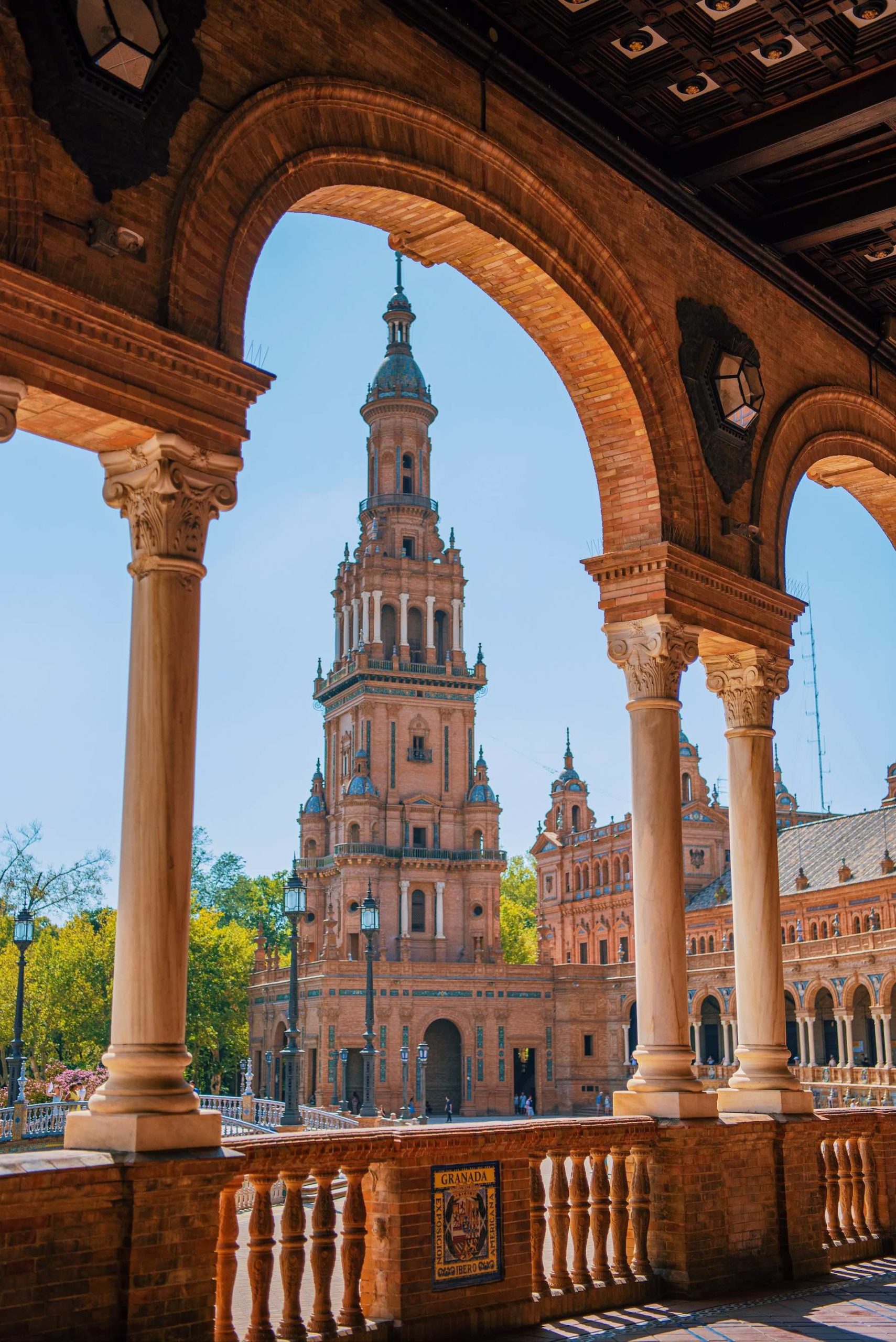
Plaza de España, Sevilla, Spain. Photo by Tânia Mousinho
Leaning over the railing atop La Giralda – the bell tower of Seville Cathedral and the city’s signature landmark – I peer down upon the church’s sprawling rooftop and supporting buttresses. This is Spain’s largest cathedral and the world’s third largest. Cloistered within its sanctuary walls grows a quiet garden of orange trees heavy with fruit. Beyond the cathedral spreads four square kilometres of winding, cobbled streets. Seville is known as the Pearl of Andalusia, Spain’s southern region for which Seville serves as capital. The streets are a labyrinth of historic buildings, plazas and smaller churches, among them three UNESCO World Heritage Sites, including the cathedral itself.
Seville’s walkable streets – many are pedestrian only – wend through neighbourhoods past tapas bars, quiet parks, busy markets, public squares and Christian sanctuaries. Tourists view the elegant architecture from horse-drawn carriages, double-decker tour buses, rental bikes and electric scooters.
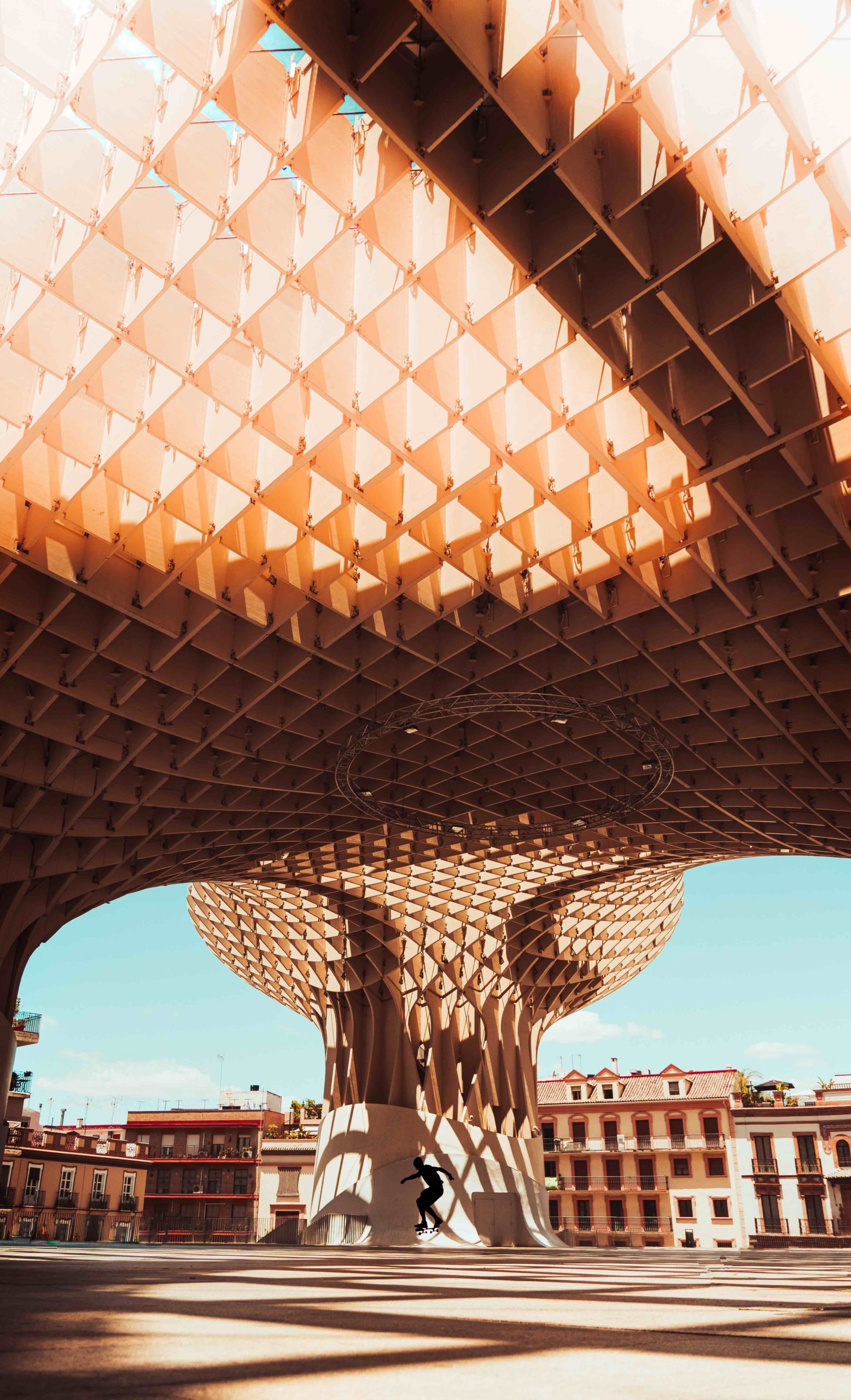
Setas de Sevilla (“Mushrooms of Seville”. Photo by Clement Duguerre
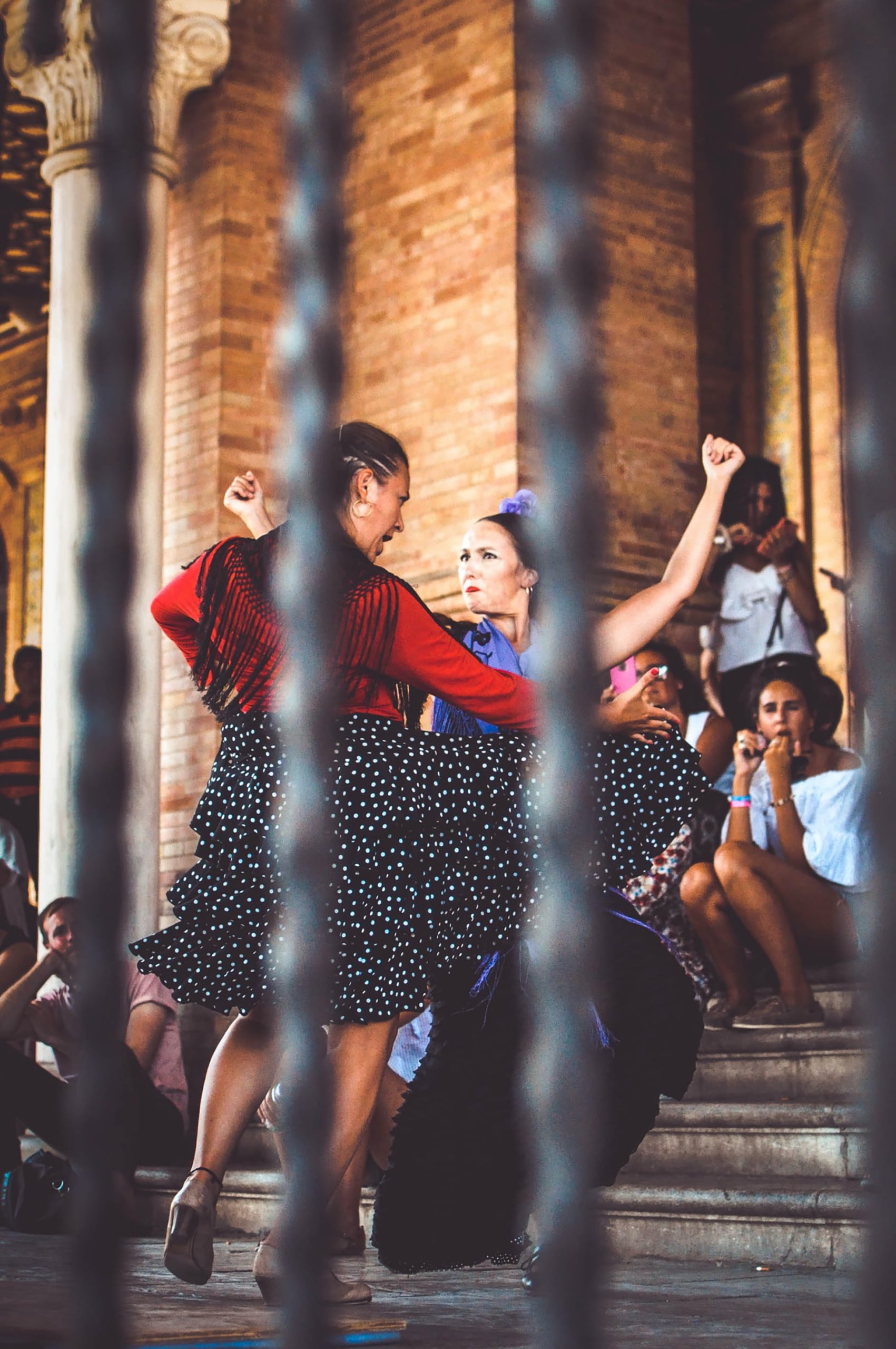
Flamenco dancers. Photo by Stephan Valentin
The city’s Moorish and Arabian beginnings are stamped on many of its most important structures. The cathedral itself is a converted 12th century mosque and the Giraldi bell tower I’m standing in was originally a minaret. The Alcazar Palace next to the cathedral is a Christian site built on a Muslim residential fortress, astonishingly beautiful for the intricacy of its Moorish carved stone and glazed tile decor.
From the top of the tower, I snap a few more pics and descend its 35 levels back down to the street. The view from the tower is grand indeed, but walking Seville’s streets among the cafes, bars, shops and shoppers with the aroma of espresso and spicy paella filling the air, is the best way to get to know the Pearl of Andalusia.


